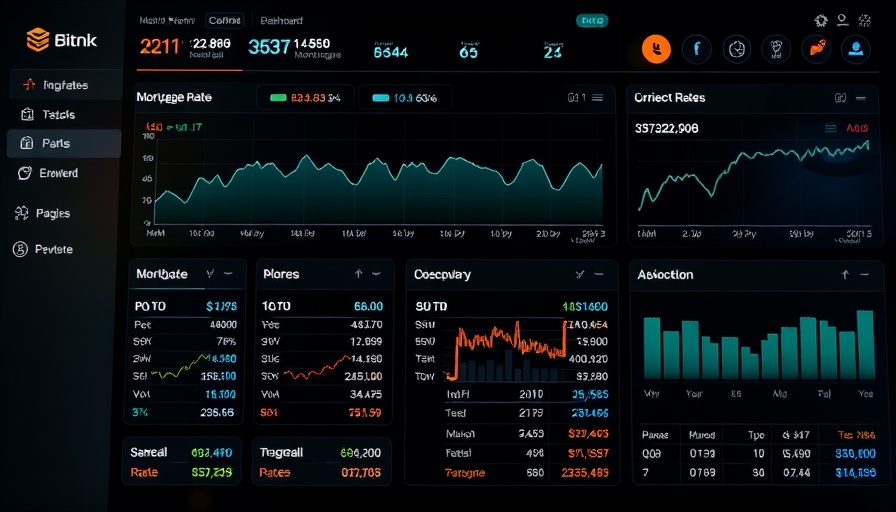
The Stability of Mortgage Rates Amidst Market Flux
As of May 20, 2025, mortgage rates have managed to hold steady, hovering near recent highs. This stability comes in the wake of multiple fluctuations in the underlying bond market, which is instrumental in determining day-to-day mortgage rates. Notably, even amid market volatility, lenders have been adjusting their rates based on optimal market conditions. Yesterday's positive movements allowed most lenders to bring the average rate back under the critical 7% threshold, providing a sigh of relief for prospective homebuyers.
Understanding Market Reactions to Bond Movements
Mortgage rates often mirror the performance of the bond market, where daily shifts can influence rates significantly. As reported, the day began with some weaknesses, yet the overall bond market position remained stable. Consequently, most lenders saw no significant changes in the average mortgage rates offered, as they stuck closely to either yesterday's or last Wednesday's highs.
Regional Variability in Mortgage Rates
While the average national mortgage rate remains informative, it’s crucial to recognize that lenders can offer vastly different rates based on a number of factors, including timing and regional economic conditions. Therefore, while one lender may showcase more favorable offers, another might lag behind. This variability underlines the importance of shopping around and comparing rates to secure the best deal available.
The Implications for Homebuyers and Investors
For homebuyers navigating this competitive market, understanding mortgage rate trends can significantly impact their purchasing decisions. As per last week’s trends, the overall movement towards the 7% mark highlights a challenging climate for potential buyers, particularly first-time homeowners who may feel budget constraints. Conversely, investors in real estate might have a slightly different take. Higher interest rates can often lead to reduced competition in the housing market, translates into more negotiating power for savvy real estate developers.
Future Predictions: Navigating Mortgage Rates
Looking ahead, experts postulate that we may see mortgage rates average between 6.75% to 7.25% over the next few months, depending on broader economic indicators such as inflation and Federal Reserve policies. Rates remaining in this range may induce a cooling effect in the housing market, prompting sellers to adjust their asking prices. Proactive buyers must remain vigilant and stay informed about pending changes, particularly if they are considering a home purchase this season.
Final Thoughts on Current Trends in Mortgage Rates
Understanding the current mortgage rate landscape is integral for buyers and investors alike. It is essential to keep abreast of daily rate changes, as even small fluctuations can produce significant financial implications in the long run. By utilizing available tools, such as rate alerts and mortgage calculators, prospective borrowers can make informed decisions tailored to their specific needs.
 Add Row
Add Row  Add
Add 




Write A Comment